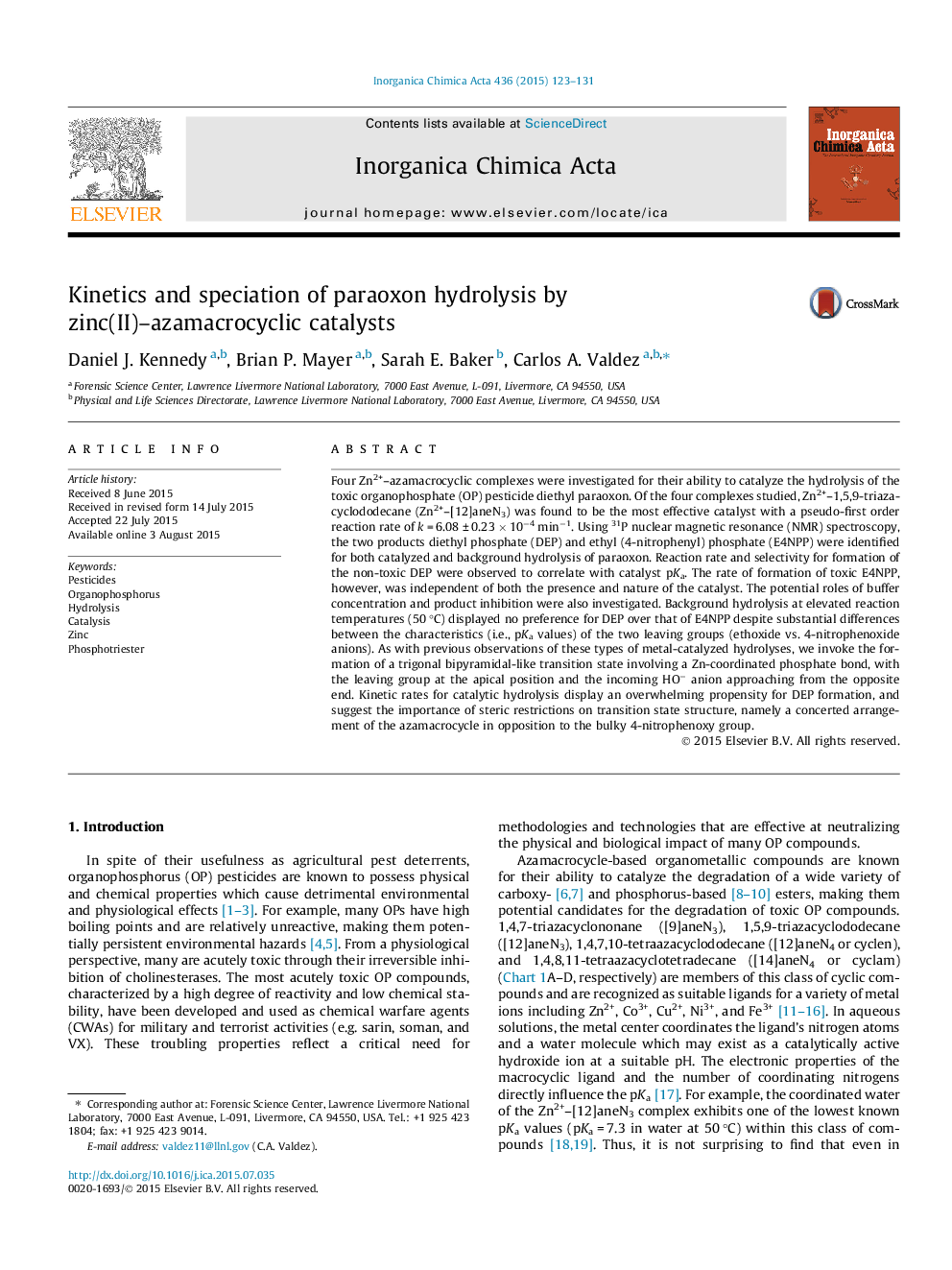| کد مقاله | کد نشریه | سال انتشار | مقاله انگلیسی | نسخه تمام متن |
|---|---|---|---|---|
| 1307633 | 1499153 | 2015 | 9 صفحه PDF | دانلود رایگان |

• We assess the use of Zn2+–azamacrocycles for catalytic hydrolysis of diethyl paraoxon.
• We demonstrate up to a ten-fold increase in hydrolysis rate at neutral pH and 30 °C.
• We show that all catalysts selectively produce non-toxic byproducts over toxic ones.
• Modified catalysts may allow safe and fast pesticide breakdown at ambient conditions.
Four Zn2+–azamacrocyclic complexes were investigated for their ability to catalyze the hydrolysis of the toxic organophosphate (OP) pesticide diethyl paraoxon. Of the four complexes studied, Zn2+–1,5,9-triazacyclododecane (Zn2+–[12]aneN3) was found to be the most effective catalyst with a pseudo-first order reaction rate of k = 6.08 ± 0.23 × 10−4 min−1. Using 31P nuclear magnetic resonance (NMR) spectroscopy, the two products diethyl phosphate (DEP) and ethyl (4-nitrophenyl) phosphate (E4NPP) were identified for both catalyzed and background hydrolysis of paraoxon. Reaction rate and selectivity for formation of the non-toxic DEP were observed to correlate with catalyst pKa. The rate of formation of toxic E4NPP, however, was independent of both the presence and nature of the catalyst. The potential roles of buffer concentration and product inhibition were also investigated. Background hydrolysis at elevated reaction temperatures (50 °C) displayed no preference for DEP over that of E4NPP despite substantial differences between the characteristics (i.e., pKa values) of the two leaving groups (ethoxide vs. 4-nitrophenoxide anions). As with previous observations of these types of metal-catalyzed hydrolyses, we invoke the formation of a trigonal bipyramidal-like transition state involving a Zn-coordinated phosphate bond, with the leaving group at the apical position and the incoming HO− anion approaching from the opposite end. Kinetic rates for catalytic hydrolysis display an overwhelming propensity for DEP formation, and suggest the importance of steric restrictions on transition state structure, namely a concerted arrangement of the azamacrocycle in opposition to the bulky 4-nitrophenoxy group.
The pesticide diethyl paraoxon (O,O-diethyl O-(4-nitrophenyl) phosphate) is catalytically hydrolyzed at neutral pH and 30 °C using a panel of four Zn2+–azamacrocycle catalysts. The catalysts preferentially produce the non-toxic diethyl phosphate (DEP) over the toxic ethyl (4-nitrophenyl) phosphate. This work represents an important step toward pesticide neutralization at ambient conditions.Figure optionsDownload as PowerPoint slide
Journal: Inorganica Chimica Acta - Volume 436, 1 September 2015, Pages 123–131